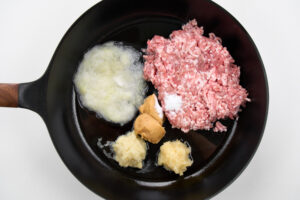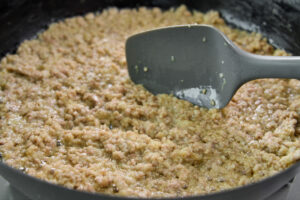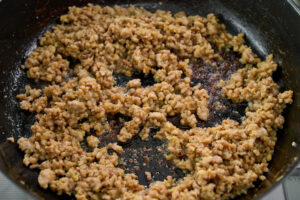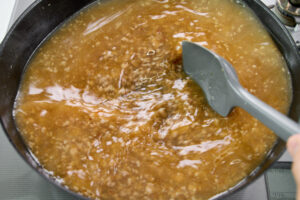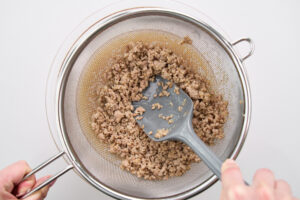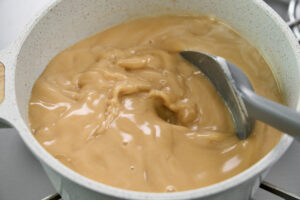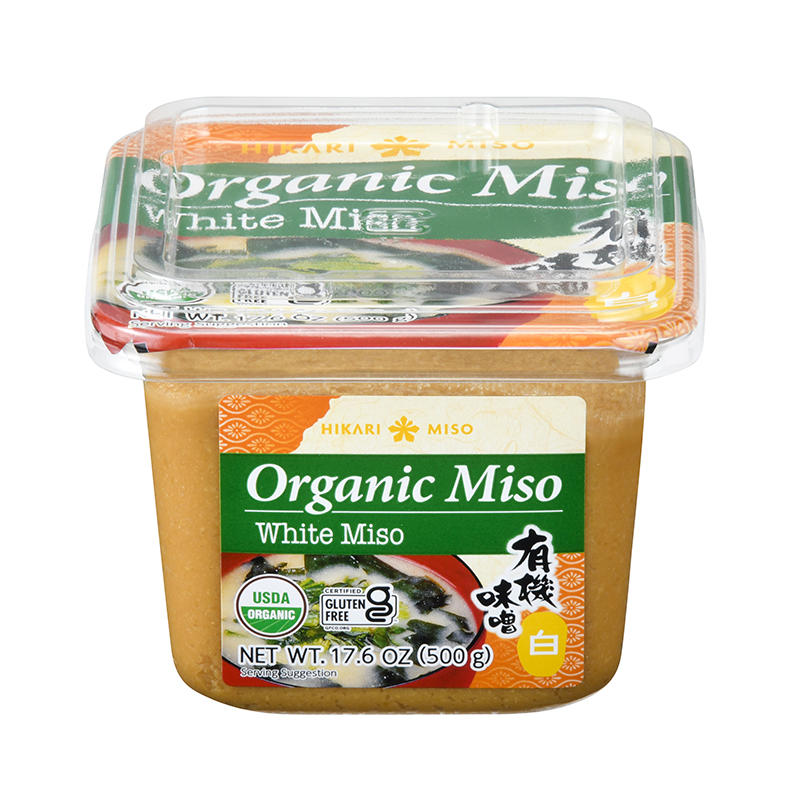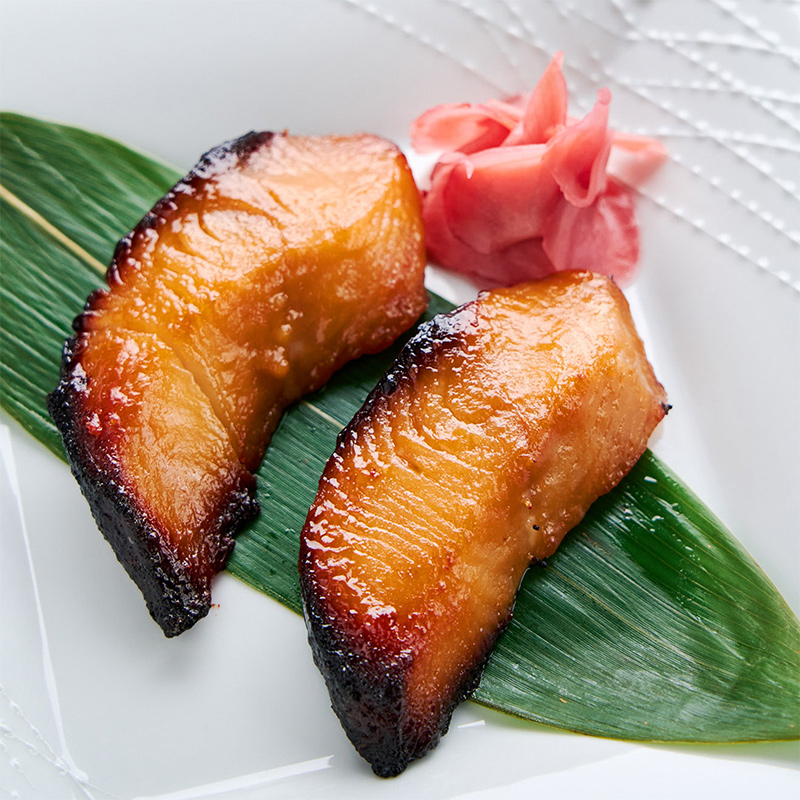With its earthy miso aroma, rich miso tonkotsu broth, and springy yellow noodles, this creamy ramen recipe delivers the kind of soul-warming comfort perfected in the ramen shops of Sapporo, Japan.
Contrary to what some recipes claim, the creamy texture of tonkotsu broth doesn’t come from milk, heavy cream, or coconut milk. Traditional versions of this Japanese noodle soup boil pork bones for hours, dissolving their collagen into the broth. The collagen emulsifies the fat and stock, creating its rich, unctuous mouthfeel.
This easy miso ramen recipe uses a few clever shortcuts to achieve the same richness and umami-packed flavor in a fraction of the time. The result? A restaurant-quality bowl of authentic Japanese ramen in under 30 minutes.
Why This Recipe Works:
- Using ground pork and grated aromatics quickly infuses the creamy broth with a deep, savory flavor.
- Browning the pork with a bit of miso builds the complex, roasted notes in Sapporo style ramen.
- Powdered gelatin boosts the soup’s collagen content, giving it a creamy mouthfeel like tonkotsu miso ramen broth.
- Adding fresh white miso at the end lets you emulsify the soup with a stick blender to create a rich, creamy ramen broth.
Ingredients
- Ground pork – Adds savory depth and richness to the broth. Because it has more surface area than whole cuts, ground pork browns quickly, developing flavorful caramelized bits that mimic the taste of long-simmered pork bone broth. If you don’t eat pork, ground chicken is a good alternative—just be sure it has enough fat to carry the flavor.
- Onion – Adds natural sweetness and aromatic depth, balancing the miso and pork. Grating the onion helps it caramelize faster and melt into the broth for a smooth texture.
- Ginger – Fresh ginger brightens the soup and cuts through the richness, lending a clean, peppery zing that’s essential flavor component of Japanese miso ramen.
- Garlic – Offers a bold, pungent punch that wakes up the broth and enhances its savory complexity. It’s a small ingredient that makes a big impact.
- White miso – Mellow and mildly sweet, this fermented soybean paste is the primary seasoning for the miso broth, providing the salt while giving your bowl of ramen a rich flavor with loads of umami. You can experiment with darker varieties of miso paste, such as red miso, for a bolder flavor.
- Baking soda – A pinch of baking soda raises the pH, which speeds up the Maillard reaction and helps brown the pork and aromatics more quickly. You can skip it but expect to spend more time stir-frying.
- Chicken broth – A light, low-sodium chicken stock forms the base of the soup, offering a head start over using water. Vegetable or dashi stock are other great options.
- Powdered gelatin – Tonkotsu ramen broth gets its silky texture from dissolved collagen from bones that are simmered for hours. Gelatin replicates that unctuous tonkotsu-style richness in an instant, no bones required.
- Fresh ramen noodles – The chewy texture of fresh noodles is essential for a truly satisfying bowl of creamy miso ramen. Curly yellow alkaline noodles are the noodles of choice for authentic Sapporo style ramen. In a pinch, other dried or fresh Asian noodles will work.
- Toppings – Ramen is a bit like pizza in that you can top your bowl of noodles with whatever combination of vegetables, proteins, and condiments you like. Some ideas include scallions, sweet corn, grated ginger, shiitake mushrooms, tofu, chicken, hot chili paste, hot sauce, etc. While dairy ingredients like milk and heavy cream aren’t used in the broth, Miso ramen is sometimes topped with butter.
How to Make Creamy Ramen
To make the Tonkotsu miso ramen broth, you’ll start by building layers of flavor. Add the ground pork, grated onion, ginger, garlic, some white miso, a splash of oil, and a pinch of baking soda to a large skillet or saucepan. The baking soda raises the pH, which encourages the Maillard reaction—this is the same process that gives seared meats their irresistible, savory flavor. Stir everything together and place the pan over medium-high heat. As the pork cooks, use the edge of your spatula to break up any chunks, mixing frequently to prevent burning.
Continue stir-frying until the mixture darkens and a sticky, brown fond forms on the bottom of the pan—this will take about 8 to 10 minutes. That layer of caramelized bits is pure flavor and it’s what quickly creates the depth of flavor of tonkotsu pork bone broth. Be patient here; if the pan starts to scorch, reduce the heat and keep stirring.
Next, pour in the chicken stock and sprinkle in the powdered gelatin. Turn the heat to high and use a wooden spoon or spatula to scrape up the fond as the soup comes to a boil. The gelatin is a shortcut to the silky, collagen-rich texture found in tonkotsu miso ramen, giving the flavorful broth a satisfying body without simmering the bones for hours. Once it reaches a rolling boil, reduce the heat and let it simmer for about 6 minutes to infuse the broth with all that porky, umami-packed goodness.
Now, strain the mixture through a fine-mesh sieve into a clean pot or bowl, pressing on the solids to extract every drop of flavor. While the cooked meat won’t be served in this bowl of ramen, it can be saved for another dish—try using it in fried rice or stir-fried noodles.
Add the remaining white miso paste to the strained broth, then use an immersion blender to emulsify the soup. This technique incorporates the fat into the soup, creating the rich, creamy texture of tonkotsu ramen in minutes. Keep the broth warm over low heat, but don’t let it boil.
Meanwhile, boil your ramen noodles in a pot of water according to the package instructions. Drain them well and divide them between two bowls. Ladle the creamy miso ramen soup over the noodles, then use chopsticks or tongs to form a neat nest of noodles in each bowl. This helps distribute the broth and keeps the noodles from clumping while giving you a pedestal on which to add your favorite ramen toppings.
Top the noodles with your choice of toppings, such as sweet corn, green onions, mushrooms, toasted sesame seeds, a soft-boiled egg, or a few slices of chashu. If you want to turn this into a spicy miso ramen, make a batch of Spicy Miso for a topping or drizzle on some hot chili oil or your favorite Asian chili sauce.
With a little planning, you can have this tonkotsu miso ramen recipe on the table in under 30 minutes.
Ingredients
- 1 tablespoon vegetableoil
- 250 grams groundpork
- 60 grams onion(1/4 large onion, grated)
- 25 grams ginger( 1-inch piece, grated)
- 20 grams garlic(3large cloves, grated)
- 2 tablespoons ORGANICMISO WHITE MISO (36 grams)
- ¼ tablespoon baking soda
- 4 cups low sodium chicken broth⅓
- 10 grams powdered gelatin
- 3 tablespoons ORGANICMISO WHITE MISO (54 grams)
- 260 grams fresh ramen noodles
Nutrition Facts
Instructions
- Add 1 tablespoon vegetable oil, 250 gramsground pork, 60 grams onion, 25 grams ginger, 20 grams garlic, 2 tablespoonsORGANIC MISO WHITE MISO, and ¼ teaspoon baking soda to a frying pan.

- Put the pan over medium-high heat andstir-fry the ingredients while crumbling with the side of a spatula to break upany chunks of pork or miso.

- Continue stir-frying the mixture untilthere is no liquid left and a thick layer of brown fond forms on the bottom ofthe pan (about 8-10 minutes).

- Add 4 cups low-sodium chicken broth and 10grams powdered gelatin to the pan. Turn the stove to high heat and bring theramen broth to a rolling boil while scraping up the fond from the bottom andsides of the pan. Turn down the heat to maintain a full simmer and cook for 6minutes.

- Strain the mixture through a fine meshstrainer and press on the solids to extract as much broth from the meat aspossible. Save the meat to use in a different recipe.

- Add 3 tablespoonsORGANIC MISO WHITE MISO and Use an immersion blender to emulsify the miso intothe creamy broth until it is creamy and uniform in color.

- Transfer the creamyramen broth to a pot and keep it warm over low heat, but do not let itboil.

- Bring a large pot ofwater to a boil and cook your ramen noodles according to the packagedirections. Drain the noodles well.

- To serve the tonkotsumiso ramen, divide the ramen noodles between two bowls.
- Pour the hot broth overthe noodles and use chopsticks or tongs to pull them up and over themselves tocreate a flat platform of noodles.

- Garnish the tonkotsu miso ramen with your favorite toppings such ascorn, chopped green onions, mushrooms, a soft-boiled egg, or sliced meat.



